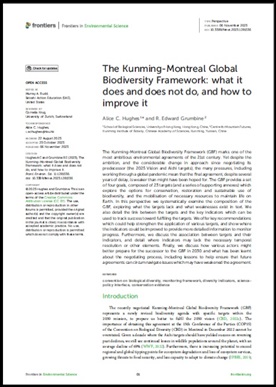
The Kunming-Montreal Global Biodiversity Framework (GBF) marks one of the most ambitious environmental agreements of the 21st century. Yet despite the ambition, and the considerable change in approach since negotiating its predecessor (the 2025 Vision and Aichi targets), the many pressures, including working through a global pandemic mean that the final agreement, despite several years of delay, is weaker than might have been hoped for. The GBF provides a set of four goals, composed of 23 targets (and a series of supporting annexes) which explore the options for conservation, restoration and sustainable use of biodiversity, and the mobilisation of necessary resources to maintain life on Earth. In this perspective we systematically examine the composition of the GBF, exploring what the targets lack and what weaknesses exist in text. We also detail the link between the targets and the key indicators which can be used to track success toward fulfilling the targets. We offer key recommendations which could help strengthen the application of various targets, and show where the indicators could be improved to provide more detailed information to monitor progress. Furthermore, we discuss the association between targets and their indicators, and detail where indicators may lack the necessary temporal resolution or other elements. Finally, we discuss how various actors might better prepare for the successor to the GBF in 2030 and what has been learnt about the negotiating process, including lessons to help ensure that future agreements can circumnavigate issues which may have weakened the agreement.






